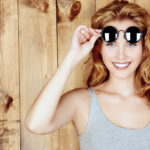By David Blyweiss, M.D., Advanced Natural Wellness
November 26, 2018
The other day a new study hit my desk. And it confirms the results of every other study done on the topic of body mass…
…A high BMI increases your chances of an early death!
This isn’t breaking news.
You know as well as I do that being overweight is detrimental to your health. And sadly, nearly 75% of Americans are overweight or obese. I see it every day here in my own practice.
On the other hand, I don’t necessarily agree that BMI is always the best indicator of obesity. Or early death.
In fact, just last week I saw the inconsistency of this measurement in action.
In one exam room I had a big brute of a man. He was just over six feet tall. He weighed 230 pounds. The guy looked like he could be professional linebacker for any NFL football team. He was teeming with muscle, health, energy and vitality.
In another room was a fellow who also weighed in right around 230 pounds. He, too, was about six foot tall. But no football team would ever draft him. He had no muscle. His gut was hanging over his trousers. He looked downright sickly.
Well here’s the thing.
In terms of BMI, both of these guys would be considered obese. According to studies, each of them is a candidate for obesity-related illnesses and early death.
But how much do you want to bet that the one who looks like an NFL linebacker lives a longer and healthier life than his counterpart?
You see the problem, right?
BMI is a measure of height and weight. It has nothing to do with destructive fat mass, tissue water content, or healthy, lean muscle.
This means it doesn’t even really work for people with a “normal” BMI.
I see a lot of “thin” adults who are walking around with excess fat in their abdomens that is silently strangling their organs.
The World's Quickest Solution for Ending Prostate and Urinary Misery
This has recently been revealed to be one of the only real breakthroughs in prostate health.
The seeds of a strange fruit (sometimes called "Chinese Apples") hold powerful phytonutrients that are a revolution in prostate health.
In fact, UCLA and Veterans Administration research have now proved this to be true.
Not only that, but it may be the worlds quickest solution for ending prostate misery.
Simply stated, these phytonutrients represent a huge step beyond beta sitosterol, saw palmetto, and other phytosterols alone.
Simply click HERE if you want to have fast prostate relief...restful, uninterrupted sleep...no more constant "urges to go"...enhanced virility...and optimal prostate support for life.
These people are called “skinny fat”. They have normal body weight combined with a large percentage of body fat and very little lean muscle mass.
And it will send them down a bad road just as easily as a poor BMI score.
More Important than Body Mass Index…
Nobody wants to die earlier than they have to. We all want to live the healthiest, happiest and fullest lives we can.
So forget about BMI. We’ve seen over and over again that waist-to-hip ratio is a much better predictor of poor health and death than BMI. After all, it’s the belly fat that counts most.
Just take a tape measure and wrap it around your waist at the narrowest point (between the bottom of your rib cage and the top of your belly button.) Record the circumference in inches.
Then measure your hips at the widest point. This is where your buttocks are at the largest. Record that number. Then divide your waist measurement by the hip measurement.
For example if your waist is 36” and your hips are 38” you would simply perform this calculation: 36 ¸ 38 = .94
Here’s how to read your results:
| Low Risk | Moderate Risk | High Risk | |
| Men | .90 or below | .91 to 1.0 | 1.0+ |
| Women | .80 or below | .81 to .85 | .85+ |
If your waist-to-hip ratio places you at moderate to high risk, take action now to change your life. Get up. Get moving. Get involved in high intensity interval training exercises to burn off that excess belly fat.
I also recommend filling your diet with fresh fruits, nuts, vegetables, beans, healthy fats and small portions of lean protein.
If you don’t do it, nobody else will do it for you.
SOURCES:
Bhaskaran K, et al. Association of BMI with overall and cause-specific mortality: a population-based cohort study of 3·6 million adults in the UK. The Lancet Diabetes and Endocrinology. Published online first Oct 2018.
Staiano AE, et al. Body mass index versus waist circumference as predictors of mortality in Canadian adults. Int J Obes (Lond). 2012 Nov;36(11):1450-4.
Czernichow S, et al. Body mass index, waist circumference, and waist-hip ratio: which is the better discriminator of cardiovascular disease mortality risk? Evidence from an individual-participant meta-analysis of 82,864 participants from nine cohort studies. Obes Rev. 2011 Sep; 12(9): 680–687.







